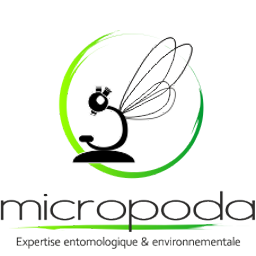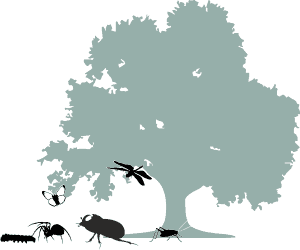Simple faunistic inventories
From a sampling of the entomofauna in the field by a set of
methods appropriate to each study, a minimum list of
arthropod species present is established. This list is
enriched with information on the status of species, such as
their endemicity or their ecological heritage character.
In the absence of a complete identification up to the species,
a morphotype is assigned to each specimen. This method makes
it possible to obtain within a reasonable time a
representative inventory of the bioviversity actually present
and to use all the faunistic information available to produce
an ecological diagnosis.
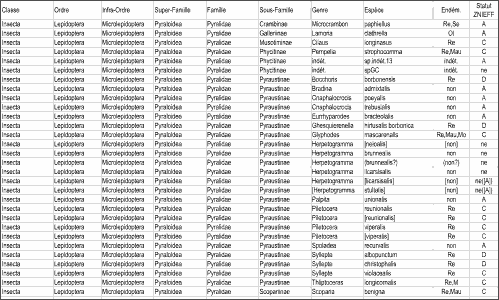
Qualitative ecological indicators
In oceanic islands, the proportion of endemic species is
positively correlated with altitude and the level of habitat
preservation. The proportions of native species linked to
preserved habitats are also, in Réunion, good
indicators of the degree of conservation of native habitats.
The presence of anthropogenic species is, on the other hand,
an indicator of disturbance or transformation of the habitat,
even at a small scale.
These proportions are not simple percentages but are
calculated with their confidence interval and can thus be
broken down by site, by station or by sampled plant species.
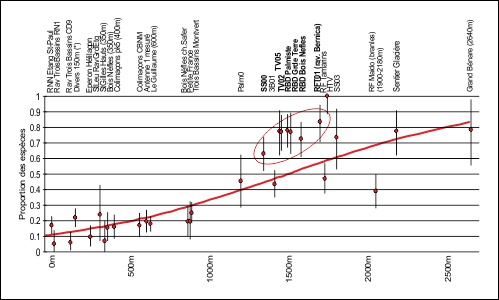
Relationships and specificities between arthropods, plants, sites and habitats
Particular attention is paid to the relationships between
arthropod species and the plants on which they are sampled.
The plants which home a greater number of arthropod species
specifically associated with them are thus identified as
having a major ecological role for the arthropofauna; these
relationships are often linked to the native status of the
species at stake.
The same qualitative approach can be applied by site and by
habitat.

Descriptors of arthropod communities
When the sample is standardized, the descriptors of arthropod
communities, namely abundance (number of
individuals), richness (number of species) and diversity
(relative share of the different species in the
richness) are excellent variables for measuring the effects of
environmental factors (see next point).
It is also necessary to take into account the combination of
these three variables: thus (example opposite), the increase
in the abundance and richness of arthropods with the
degradation of habitats may be accompanied by a collapse in
diversity which reflects the proliferation of certain species
while others are becoming scarce.

Effects of environmental factors, search for indicator species
Correlations between arthropod species and plants (or
stations), or arthropods and environmental factors, can be
highlighted by multivariate statistics (opposite).
When sampling is standardized, these correlations can be
quantified and the effects of environmental factors (altitude,
time since disturbance, etc.) on community descriptors
(abundance, richness and diversity) can be quantified by
hypothesis tests.

Population counts and dynamics
Sometimes it is necessary to measure the population density
of certain particular species of arthropods, in time
(population dynamics) or in space. Rapid visual counting
methods can be developed on a case-by-case basis to assess the
densities of populations present.
Population dynamics are then described and analyzed in
relation to a set of potentially explanatory environmental
parameters chosen a priori (climatic parameters, treatments,
cultivation practices, habitat, ...).
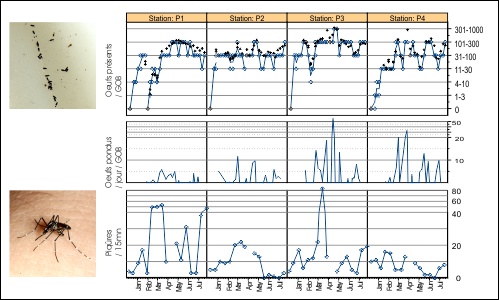
Miscellaneous data analysis
Beyond ecological inventories and assessments, we can carry out "à la carte" a wide range of statistical analysis of experimental and environmental data, and advise on protocols prior to experimentation and data collection: population monitoring, adapted counting methods, effects of environmental practices, survival analysis ...

